Ores
An Ore is a basic resource item, usually obtained by mining Asteroids. Using a Hand Drill or ship-mounted Drill will destroy the rock and release the Ores as objects in the world to be collected. While useless on its own, Ore can be processed in a Refinery or Arc Furnace to be turned into a useful Material.
Appearance and Identification
Identifying ore patches purely by sight can be frustrating, especially if there are two similar ores next to one another (such as Platinum and Silicon). It is for this reason that an Ore Detector is always highly recommended for the initial identification process. The Hand Drill has a small Ore Detector built in, whereas a ship-based Ore Detector has a larger detection radius. This will put the name of the ore on the HUD in approximately the center of the ore patch. However, once you have identified the vein you wish to obtain, it can often be more effective to rely on sight to guide your mining, and so a Spotlight is almost always useful for this purpose, to more easily see where one vein ends and another begins.
See the images and descriptions in the table below for more information on each ore.
Ore Information
| Icon | Ore | Abbreviation | Appearance | Description | Mass per Unit | Volume per Unit | Rarity [1] |
|---|---|---|---|---|---|---|---|
| |
Stone | Stone | 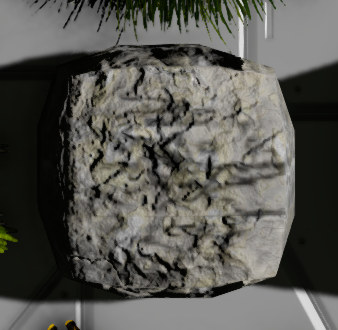 |
Color varies slightly. Typically a matte midtone grey, the appearance of stone can vary a bit between brown and black. | 2.7 Kg | 1 L | 31% |
| |
Iron Ore | Fe | 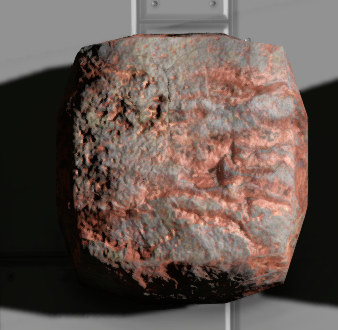 |
Red and Grey. Iron is fairly easy to identify due to being so common and in such contrast to the grey of the surrounding stone. Focus on looking for reddish, rust-colored areas if Iron is a priority. | 2.7 Kg | 1 L | 50% |
| |
Nickel Ore | Ni |  |
Brown. Nickel is a straight, flat, brown, which when it spawns next to Iron shows strikingly enough to be discernable. | 2.7 Kg | 1 L | 2% |
| |
Cobalt Ore | Co | 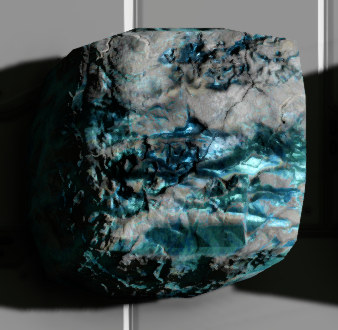 |
Yellowish-Grey with Brown streaks. With a grey base, it can be difficult to discern from surrounding stone, so search for the distinct brownish-yellow bands. | 2.7 Kg | 1 L | 2.2% |
| |
Magnesium Ore | Mg | 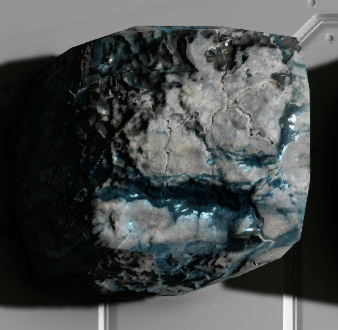 |
Blue. Rather distinct, Magnesium is not very hard to identify, but is fairly rare, so always keep a look out for the bluish hue! | 2.7 Kg | 1 L | 2.4% |
| |
Silicon Ore | Si | Grey. One of three greyish ores, Silicon can be the most difficult to spot due to how close its color and texture are to base stone. Its color will often vary to a light grey, almost white sheen, so look for uncharacteristically light patches. | 2.7 Kg | 1 L | 2% | |
| |
Silver Ore | Ag | 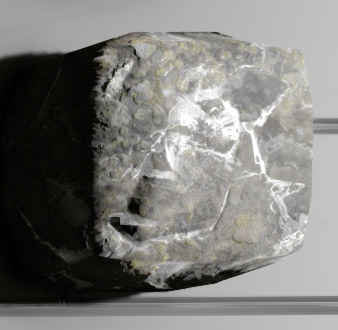 |
Bluish-Silver. Another grey ore, Silver can be differentiated between Platinum most by its contrast: dark areas are jet black, while highlights are bright white. "Shiny" is an apt description. | 2.7 Kg | 1 L | 2% |
| |
Gold Ore | Au | 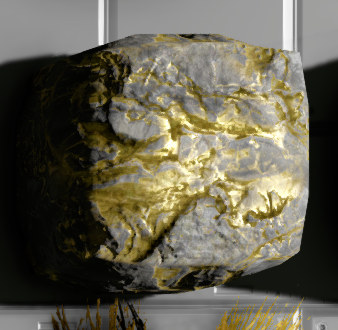 |
Gold. Very distinct. Can vary more to a grey-yellow in small patches or where it starts to mix with stone or iron. | 2.7 Kg | 1 L | 2% |
| |
Platinum Ore | Pt | 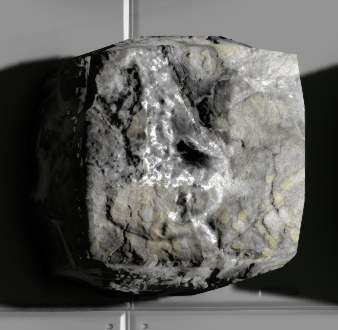 |
Grey. Can be hard to differentiate between this and stone or silicon. The most reliable distinction is the texture rather than color: stone and silicon have a rough look, while platinum is smooth. | 2.7 Kg | 1 L | 2% |
| |
Uranium Ore | U | 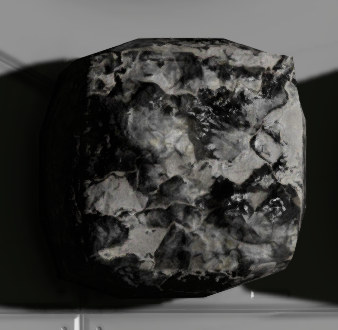 |
Black. Jet black, very shiny. Hard to miss, even in shadow (unless your server's Skybox has low light). | 2.7 Kg | 1 L | 4.4% |
Refining
Each Ore (including Stone) yields some sort of useable Material once it has been refined within a Refinery or Arc Furnace. Each Ore has exactly one type of Material that it produces, at various rates of efficiency; e.g. 1000 kg of Uranium Ore will not produce 1000 kg of Uranium Ingots. Various data on the refining process are shown below:
| Ore | Material Produced | Ore to Material Ratio | Ore Per 1 Unit Material | 1000 kg ore takes up (L) | 1000 kg ore refines to (kg) | 1000 kg ore refines to (L) |
|---|---|---|---|---|---|---|
| Stone | Gravel | 90% | 1.11 | 370 | 900 | 333 |
| Cobalt Ore | Cobalt Ingot | 30% | 3.33 | 370 | 300 | 33.6 |
| Gold Ore | Gold Ingot | 1% | 100 | 370 | 10 | 0.52 |
| Iron Ore | Iron Ingot | 70% | 1.43 | 370 | 700 | 88.9 |
| Magnesium Ore | Magnesium Powder | 0.7% | 143.4 | 370 | 7 | 4.03 |
| Nickel Ore | Nickel Ingot | 40% | 2.5 | 370 | 400 | 44.8 |
| Platinum Ore | Platinum Ingot | 0.5% | 200 | 370 | 5 | 0.24 |
| Silicon Ore | Silicon Wafer | 70% | 1.43 | 370 | 700 | 300.3 |
| Silver Ore | Silver Ingot | 10% | 10 | 370 | 100 | 9.5 |
| Uranium Ore | Uranium Ingot | 0.7% | 143.4 | 370 | 7 | 0.36 |
List of Ores
This is an automatically-generated list of Ores:
References